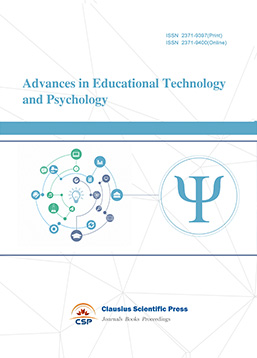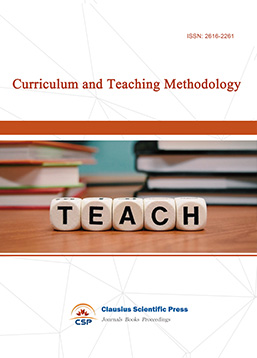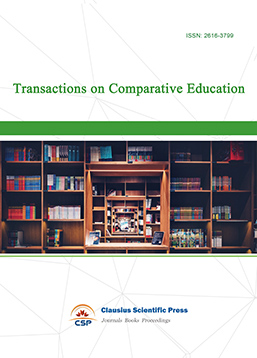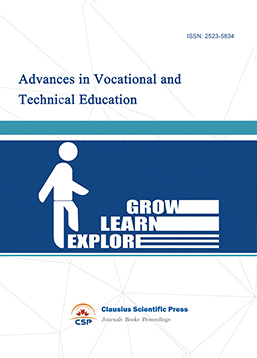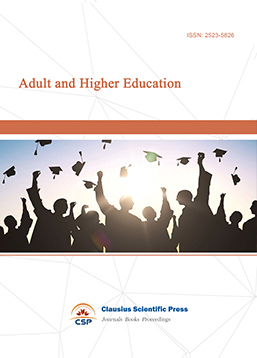The Developmental Role of Trust: parental Attachment and Romantic Attachment Mediated by Generalized Trust
DOI: 10.23977/appep.2025.060313 | Downloads: 17 | Views: 738
Author(s)
Yingying Liao 1
Affiliation(s)
1 University of Wisconsin-Madison, 500 Lincoln Dr, Madison, WI 53706, United States
Corresponding Author
Yingying LiaoABSTRACT
This study explored the relationship between emotional alienation with parents and romantic attachment avoidance in Chinese female college students, with generalized interpersonal trust as a mediator. A total of 214 participants aged 17 to 25 (M = 21.37, SD = 2.03) completed validated Chinese versions of the Inventory of Parent and Peer Attachment–Short Form (IPPA-SF), the General Trust Scale (GTS), and the Experiences in Close Relationships–Relationship Structures questionnaire (ECR-RS) by completing the questionnaire through a secure online survey platform. Pearson correlation analysis showed that emotional alienation with parents was negatively correlated with interpersonal trust (r = –0.241, p < 0.001) and positively correlated with romantic avoidance (r = 0.237, p < 0.001). Interpersonal trust was negatively associated with romantic avoidance (r = –0.206, p = 0.002). Mediation analysis using PROCESS Model 4 revealed that generalized trust significantly mediated the relationship between emotional alienation with parents and romantic avoidance, with an indirect effect of 0.10, 95% CI [0.04, 0.17]. These findings suggest that emotional alienation with parents may reduce interpersonal trust and thus increase avoidance in romantic attachment. The study provides evidence for social learning theory and attachment theory by explaining how early family attachment shapes later relationship functioning.
KEYWORDS
Parental Attachment, Alienation, Avoidance Attachment, Romantic Relationship, General Trust, College StudentCITE THIS PAPER
Yingying Liao, The Developmental Role of Trust: parental Attachment and Romantic Attachment Mediated by Generalized Trust. Applied & Educational Psychology (2025) Vol. 6: 89-97. DOI: http://dx.doi.org/10.23977/appep.2025.060313.
REFERENCES
[1] Armsden, G. C., & Greenberg, M. T. (1987). The Inventory of Parent and Peer Attachment: Individual differences and their relationship to psychological well-being in adolescence. Journal of Youth and Adolescence, 16(5), 427–454.
[2] Bandura, A. (1977). Social learning theory. Englewood Cliffs, NJ: Prentice-Hall.
Bao, X., Li, S., Zhang, Y., Tang, Q., & Chen, X. (2024). Different effects of anxiety and avoidance dimensions of attachment on interpersonal trust: A multilevel meta-analysis. Journal of Social and Personal Relationships.
[3] Bowlby, J. (1988). A secure base: Parent-child attachment and healthy human development. Basic Books.
Collins, N. L., & Read, S. J. (1990). Adult attachment, working models, and relationship quality in dating couples. Journal of Personality and Social Psychology, 58(4), 644–663.
[4] Du, X., Li, H., & Wang, F. (2024). The role of interpersonal trust in the associations between parental warmth and depressive symptoms among Chinese adolescents. Family Process. Advance online publication.
[5] Fraley, R. C., & Shaver, P. R. (2000). Adult romantic attachment: Theoretical developments, emerging controversies, and unanswered questions. Review of General Psychology, 4(2), 132–154.
[6] Fraley, R. C., Heffernan, M. E., Vicary, A. M., & Brumbaugh, C. C. (2011).
The Experiences in Close Relationships–Relationship Structures Questionnaire: A method for assessing attachment orientations across relationships. Psychological Assessment, 23(3), 615–625.
[7] Graham, J. M., Huang, J. Y., Clark, M. S., & Helgeson, V. S. (2008). The positives of negative emotions: Willingness to express negative emotions promotes relationships. Personality and Social Psychology Bulletin, 34(3), 394–406.
[8] Gross, J. J., & John, O. P. (2003). Individual differences in two emotion regulation processes: Implications for affect, relationships, and well-being. Journal of Personality and Social Psychology, 85(2), 348–362.
[9] Mikulincer, M., & Shaver, P. R. (2016). Attachment in adulthood: Structure, dynamics, and change (2nd ed.). Guilford Press.
[10] Raja, S. N., McGee, R., & Stanton, W. R. (1992). Perceived attachments to parents and peers and psychological well-being in adolescence. Journal of Youth and Adolescence, 21(4), 471–485. https://doi.org/10.1007/BF01537898
[11] Rotenberg, K. J. (Ed.). (2010). Interpersonal trust during childhood and adolescence. Cambridge University Press.
[12] Rotter, J. B. (1967). A new scale for the measurement of interpersonal trust. Journal of Personality, 35(4), 651–665.
[13] Shanoora, A., Halimatusaadia, H., Mohd Abdullah, H., & Mohd Khir, A. (2025). Parent child attachment and romantic relationship: Is there a relationship between parent child attachment and young adults' romantic relationships? The Maldives National Journal of Research, 11 (Special Issue), 117–135.
[14] Simpson, J. A. (2007). Psychological foundations of trust. Current Directions in Psychological Science, 16(5), 264–268.
[15] Yamagishi, T., & Yamagishi, M. (1994). Trust and commitment in the United States and Japan. Motivation and Emotion, 18(2), 129–166.
[16] Yuan, Y., Xiao, Y., Zhou, X., Zheng, H., Zhou, M., Zhang, L., & Liu, L. (2024). Relationship between parenting style, romantic attitudes, and dating stress among "post-00" college students. Social Science Frontiers, 13(12), 243–252.
| Downloads: | 17750 |
|---|---|
| Visits: | 654094 |

 Download as PDF
Download as PDF